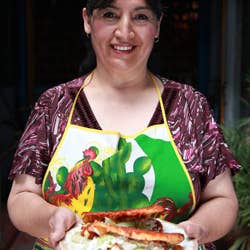
A Tale of Two Cooks
Visiting Mexico City not too long ago, I spent time with two women, Araceli Piña and Susana Rangel Gutierrez—neighbors, good friends, and great cooks. They live in Azcapotzalco, a community with ancient roots, once a leafy suburb of Mexico City, swallowed up years ago by the city's unremitting outward expansion, now a post-industrial urban neighborhood that not many tourists make it to. Cooking at home with Susana and Araceli, I got to know the two women a little bit better, and I asked a lot of questions about what food means to them and to their families. They seemed kind of amused by the whole thing, but happy to talk about what they love doing. Cooking, I found out, is what brought these two friends together in the first place—and what has provided them both, at different times, consolation, a livelihood, and a sure sense of their place in the world. I'm forever trying to get to the bottom of what makes a food culture like Mexico's so consistently excellent. How do Mexican cooks, from housewives to high-end chefs, receive and impart that incredible wealth of knowledge and skill? In the kitchens of these two extraordinary cooks—who happen to consider themselves perfectly ordinary—I set out to better understand. —Beth Kracklauer
Keep Reading
Continue to Next Story










